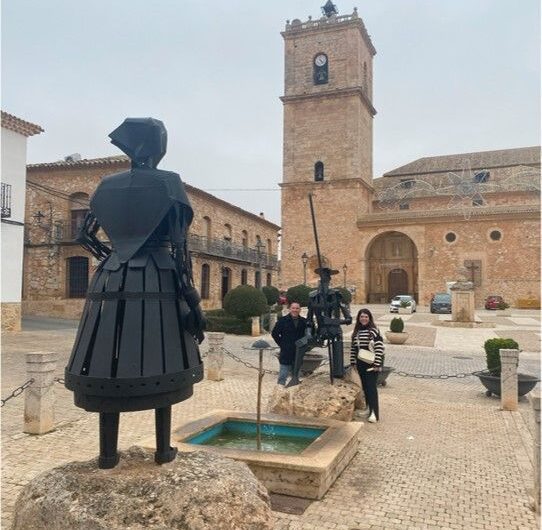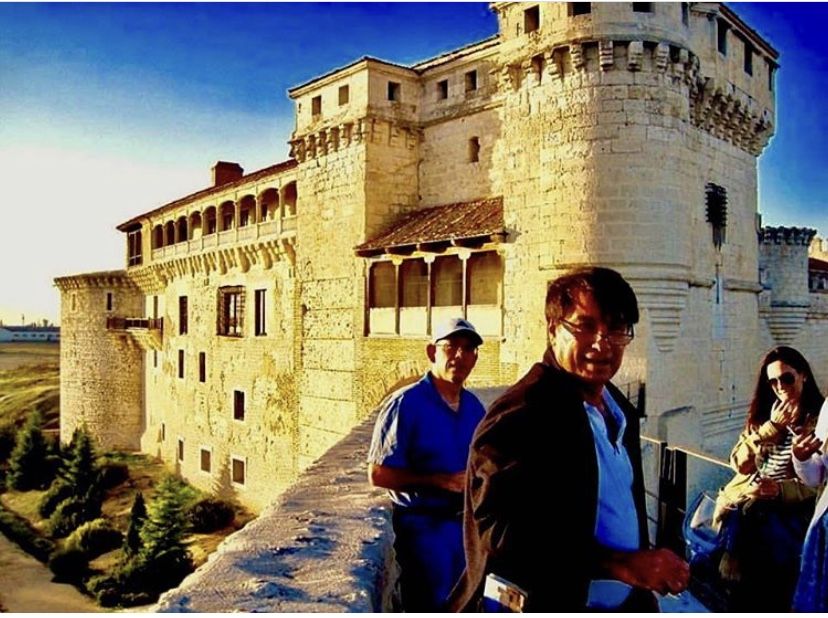Who is Miguel de Cervantes. An overview of his life.
Miguel de Cervantes Saavedra, widely regarded as one of the greatest writers in the Spanish language and world literature, lived a fascinating and eventful life. Here’s an overview of his life:
- Birth and Early Life (1547-1569): Miguel de Cervantes was born in Alcalá de Henares, Spain, in 1547. His father was a barber-surgeon, Rodrigo de Cervantes, and his mother, Leonor de Cortinas. Not much is known about his early years, but it is believed that his family moved frequently due to his father’s profession.
- Military Service and Captivity (1569-1580): In 1569, Cervantes left Spain and enlisted in the Spanish Navy to fight against the Ottoman Empire. He participated in the Battle of Lepanto in 1571, where he was wounded and lost the use of his left hand. After his military service, he was captured by Barbary pirates and spent five years as a slave in Algiers, which greatly influenced his later works.
- Return to Spain and Struggles (1580-1605): After his release from captivity, Cervantes returned to Spain. He struggled to find financial stability and success as a writer. He held various jobs, including working as a purchasing agent for the Spanish Armada and collecting taxes. During this time, he also married Catalina de Salazar y Palacios.
- Literary Career and Don Quixote (1605-1615): Cervantes achieved literary fame with the publication of his masterpiece, “Don Quixote,” in two parts (1605 and 1615). The novel, considered one of the greatest works of literature ever written, tells the story of an aging nobleman who becomes obsessed with chivalric romances and sets out on a quest with his loyal squire, Sancho Panza. “Don Quixote” is celebrated for its rich characters, humor, and exploration of themes such as reality vs. illusion, idealism, and social criticism.
- Later Years and Death (1616): Despite the success of “Don Quixote,” Cervantes continued to struggle financially. He published several other works, including novels, plays, and poems, but none achieved the same level of success. Cervantes died in Madrid in 1616, just days before William Shakespeare’s death (though exact dates of death differ due to calendar discrepancies). He was buried in the Convent of the Barefoot Trinitarians in Madrid, although the exact location of his grave remains unknown.
Miguel de Cervantes’ legacy continues to endure through his timeless masterpiece “Don Quixote,” which has been translated into numerous languages and remains a staple of world literature. He is often referred to as the “Prince of Wits” in Spanish literature, and his influence can be seen in the works of countless writers around the world.
Come with us on our wine tour of La Mancha and the windmills of Don Quixote.
What relationship does Miguel de Cervantes have with the windmills of La Mancha?
Miguel de Cervantes’ relationship with the mills of La Mancha is primarily through his masterpiece, “Don Quixote.” In “Don Quixote,” the protagonist, Alonso Quijano (better known as Don Quixote), becomes obsessed with the idea of chivalry and decides to revive knight-errantry. One of the most famous episodes in the novel involves Don Quixote mistaking windmills for giants and attacking them in an attempt to fulfill his knightly duties.
In the novel, Don Quixote encounters a series of windmills on the plains of La Mancha and, deluded by his fervent imagination, perceives them as ferocious giants. Despite the protests and warnings of his loyal squire, Sancho Panza, Don Quixote charges at the windmills with his lance, resulting in his being knocked off his horse and bruised.
This episode, often referred to as the “Battle with the Windmills,” is one of the most iconic scenes in “Don Quixote” and has become emblematic of the novel’s themes of idealism, illusion, and the contrast between reality and imagination. It highlights Don Quixote’s noble but misguided quest to uphold the ideals of chivalry in a world that has moved on from such romanticized notions.
As a result, the windmills of La Mancha have become synonymous with Cervantes’ work and are often referenced in discussions about the novel and its themes. The scene serves as a poignant reminder of the power of literature to challenge perceptions and provoke thought about the nature of reality and human folly.



